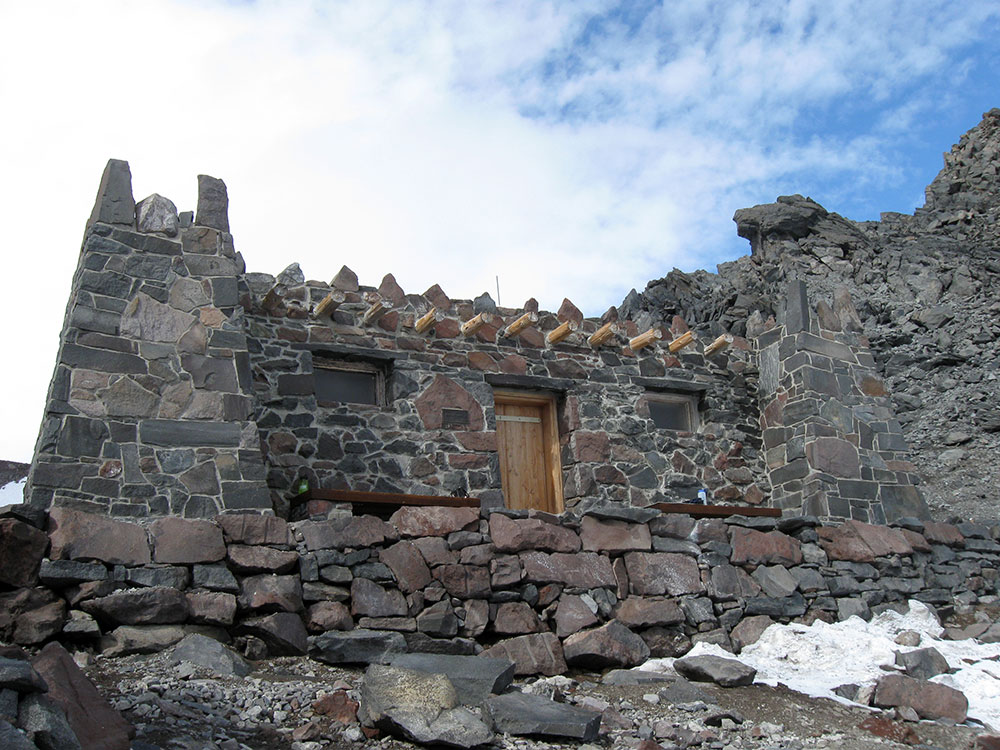Large active stratovolcano in the Cascade Range of the Pacific Northwest, located in Mount Rainier National Park, is the highest mountain in the U.S. state of Washington and the Cascade Range
General Information
Overview
Mount Rainier also known as Tahoma or Tacoma, is a large active stratovolcano in the Cascade Range of the Pacific Northwest, located in Mount Rainier National Park about 59 miles (95 km) south-southeast of Seattle. With a summit elevation of 14,411 ft (4,392 m), it is the highest mountain in the U.S. state of Washington and the Cascade Range, the most topographically prominent mountain in the contiguous United States, and the tallest in the Cascade Volcanic Arc.
Name
Mount Rainier was first known by the local Salishan speakers as Talol, Tacoma, or Tahoma. One hypothesis of the word origin is 'mother of waters' in the Lushootseed language spoken by the Puyallup people. The linguist William Bright gives the origin as Salish pronunciation: 'snow-covered mountain'. Another hypothesis is that Tacoma means "larger than Mount Baker" in Lushootseed: Ta 'larger', plus Koma (Kulshan), (Mount Baker). Other names originally used include Tahoma, Tacobeh, and Pooskaus.

John Muir
John Muir climbed Mount Rainier in 1888, and although he enjoyed the view, he conceded that it was best appreciated from below. Muir was one of many who advocated protecting the mountain. In 1893, the area was set aside as part of the Pacific Forest Reserve in order to protect its physical and economic resources, primarily timber and watersheds.
Climbing
Mountain climbing on Mount Rainier is difficult, involving traversing the largest glaciers in the U.S. south of Alaska. Most climbers require two to three days to reach the summit, with a success rate of approximately 50%, with weather and physical conditioning of the climbers being the most common reasons for failure. About 8,000 to 13,000 people attempt the climb each year, about 90% via routes from Camp Muir on the southeast flank, and most of the rest ascend Emmons Glacier via Camp Schurman on the northeast. Climbing teams require experience in glacier travel, self-rescue, and wilderness travel. All climbers who plan to climb above the high camps, Camp Muir and Camp Schurman, are required to purchase a Mount Rainier Climbing Pass and register for their climb. Additionally, solo climbers must fill out a solo climbing request form and receive written permission from the Superintendent before attempting to climb.
Climbing routes
All climbing routes on Mount Rainier require climbers to possess some level of technical climbing skill. This includes ascending and descending the mountain with the use of technical climbing equipment such as crampons, ice axes, harnesses, and ropes. Difficulty and technical challenge of climbing Mount Rainier can vary widely between climbing routes. Routes are graded in NCCS Alpine Climbing format.

The normal route to the summit of Mount Rainier is the Disappointment Cleaver Route, YDS grade II-III. As climbers on this route have access to the permanently established Camp Muir, it sees the significant majority of climbing traffic on the mountain. This route is also the most common commercially guided route. The term "cleaver" is used in the context of a rock ridge that separates two glaciers. The reason for naming this cleaver a "disappointment" is unrecorded, but it is thought to be due to climbers reaching it only to recognize their inability to reach the summit. An alternative route to the Disappointment Cleaver is the Ingraham Glacier Direct Route, grade II, and is often used when the Disappointment Cleaver route cannot be climbed due to poor route conditions.
The Emmons Glacier Route, grade II, is an alternative to the Disappointment Cleaver route and poses a lower technical challenge to climbers. The climbers on the route can make use of Camp Schurman (9,500 ft), a glacial camp site. Camp Schurman is equipped with a solar toilet and a ranger hut.
The Liberty Ridge Route, grade IV, is a considerably more challenging and objectively dangerous route than the normal route to the summit. It runs up the center of the North Face of Mount Rainier and crosses the very active Carbon Glacier. First climbed by Ome Daiber, Arnie Campbell and Jim Burrow in 1935, it is listed as one of the Fifty Classic Climbs of North America by Steve Roper and Allen Steck. This route only accounts for approximately 2% of climbers on the mountain, but approximately 25% of its deaths.
This article uses material from the Wikipedia article "Mount Rainier", which is released under the Creative Commons Attribution-Share-Alike License 3.0